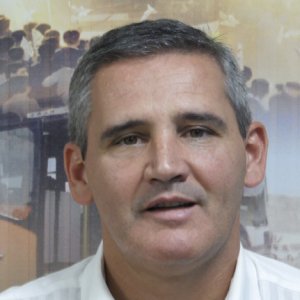Accurate Aftermarket Statics REquired to Boost Segment

STORY INLINE POST
Q: Over the last few years, what have been the main advances in the Mexican aftermarket, and how has Dacomsa helped that process?
A: Dacomsa has been steadily increasing its offerings for aftermarket customers. As new brands and models arrive in Mexico, sometimes the dealerships lack the spare parts. We are intent on supplying aftermarket parts for new OEMs as soon as we possibly can. In terms of opportunities, we have been growing at a steady pace, even though the market is facing a depression. It can be difficult to supply parts for an entire range of vehicles, so we have focused on the vehicles with higher demand. We offer parts for all OEMs with a commercial presence in Mexico, as well as most of their models, but the highest demand is in heavy duty vehicles and intensive-use vehicles.
Q: When Dacomsa learns of a new company arriving in Mexico, how do you make sure that you can supply the aftermarket parts for that model?
A: Our marketing team is looking at every new arrival in Mexico and we procure all the statistics regarding new cars on a monthly and yearly basis. We already know which products will be immediately demanded. Brake pads are a good example because they are needed within six months of a new car being sold. Almost three months after a new car is launched, we have the brake pads that are required for that vehicle. Other components we offer operate on a different cycle because, during the first three to four years, most of the cars are still under warranty. After this time, we offer gaskets, pistons, and other components for engine rebuilding. We respect patents and brand exclusivity, but our equipment design tools can be used to reverse engineer certain products, enabling us to develop part numbers with our own formulations. We have testing equipment for accrediting certain products, or for linking to other laboratories within the industry. Once we develop the part, we can guarantee its reliability to our customers.
Q: In what area of the aftermarket does Dacomsa see the most revenue?
A: There are some parts that have a smaller margin, others that are fast movers, and some that have a higher margin but little movement. Usually, the products that have more rotation, like brake pads or gaskets, have a higher turnover and are easier to sell. When you have 500 different piston numbers, for example, you would not stock the entire range in your dealership. You have to go after specialist engine components or specialist transmission and drive train components. The products that constitute the highest profit for our customers are tuning products, batteries, anti-freeze products, and oils, but Dacomsa does not distribute these products. We are more focused on drive train, brakes, and engine components.
Q: How does inventory and logistics planning work when dealing with clients that possess large fleets?
A: We do not supply directly to those fleets, but our customers have agreements to supply them through their countrywide operations and distribution networks. The fleets usually have their own repair shops, so they can purchase products from across the country under the same contract and at the same price. In these cases, they use our distributors’ warehouses as their spare parts warehouses. We also have a department for demand planning which helps us to look ahead. We have almost 20,000 SKU numbers so every single new part number needs to be determined around 12 months ahead of their production. We also purchase part of our range from thirdparty manufacturers, which means these products must be compatible with our product lines, and we must have the opportunity to deal with them on a long-term basis.
Q: What opportunities do you see in aftermarket information, and how could Dacomsa benefit from them?
A: The statistics we have gathered are focused on our products, not the general landscape, and they combine aftermarket and original equipment data. There is a huge amount of auto parts, but it is not easy to separate aftermarket parts from OEM parts. Additionally, there are a lot of imports coming directly from distributors, which do not factor into the local manufacturing statistics. Only by merging all of these figures can we gain a better idea of the local aftermarket. Ultimately, access to reliable statistics would enable us to continuously be aware of the needs of our customers, as well as focusing on trends with vehicles, shops, mechanics, installers, and associations.























